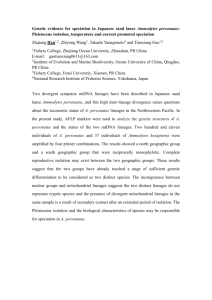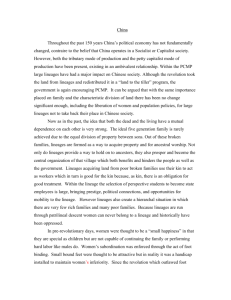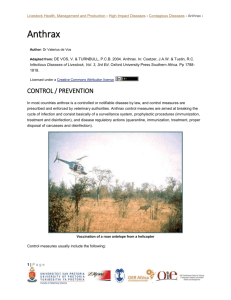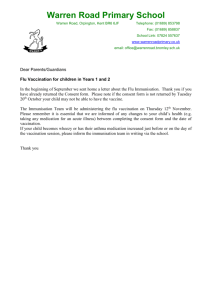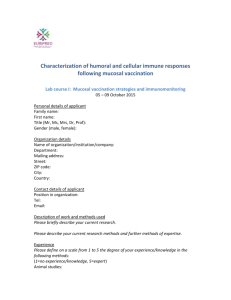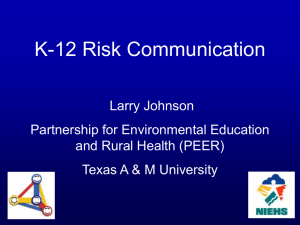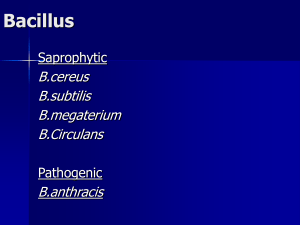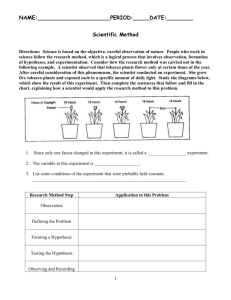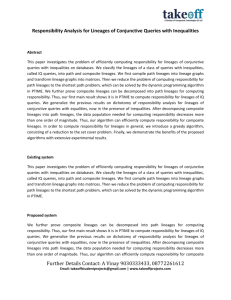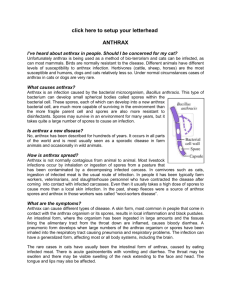GSI_Abstract
advertisement
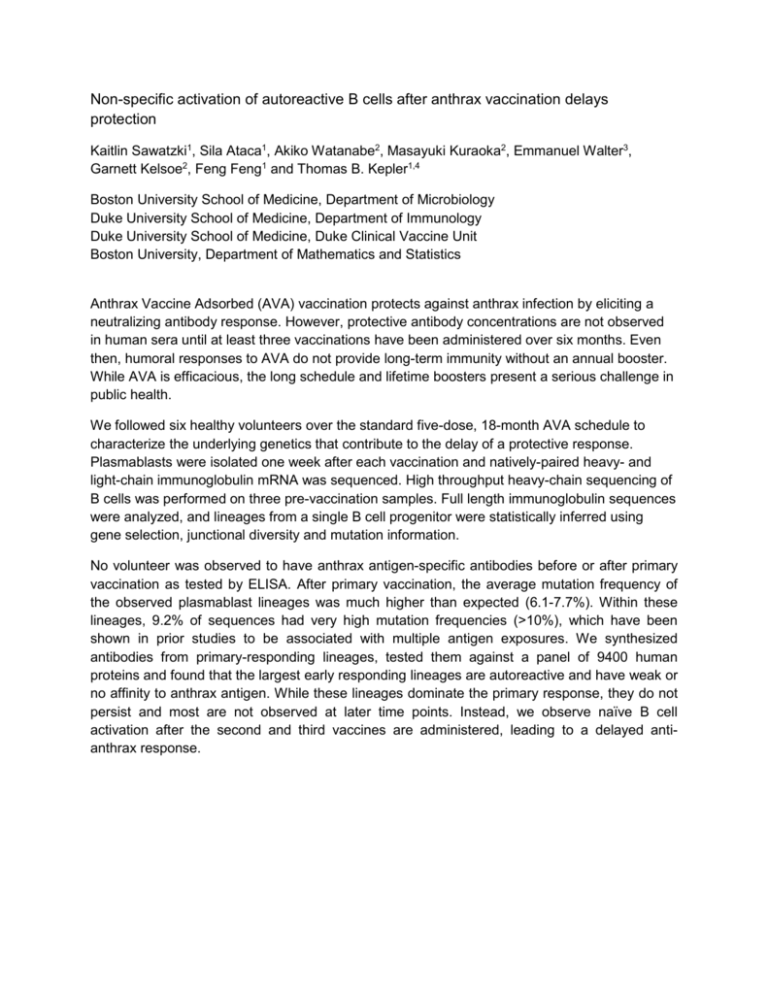
Non-specific activation of autoreactive B cells after anthrax vaccination delays protection Kaitlin Sawatzki1, Sila Ataca1, Akiko Watanabe2, Masayuki Kuraoka2, Emmanuel Walter3, Garnett Kelsoe2, Feng Feng1 and Thomas B. Kepler1,4 Boston University School of Medicine, Department of Microbiology Duke University School of Medicine, Department of Immunology Duke University School of Medicine, Duke Clinical Vaccine Unit Boston University, Department of Mathematics and Statistics Anthrax Vaccine Adsorbed (AVA) vaccination protects against anthrax infection by eliciting a neutralizing antibody response. However, protective antibody concentrations are not observed in human sera until at least three vaccinations have been administered over six months. Even then, humoral responses to AVA do not provide long-term immunity without an annual booster. While AVA is efficacious, the long schedule and lifetime boosters present a serious challenge in public health. We followed six healthy volunteers over the standard five-dose, 18-month AVA schedule to characterize the underlying genetics that contribute to the delay of a protective response. Plasmablasts were isolated one week after each vaccination and natively-paired heavy- and light-chain immunoglobulin mRNA was sequenced. High throughput heavy-chain sequencing of B cells was performed on three pre-vaccination samples. Full length immunoglobulin sequences were analyzed, and lineages from a single B cell progenitor were statistically inferred using gene selection, junctional diversity and mutation information. No volunteer was observed to have anthrax antigen-specific antibodies before or after primary vaccination as tested by ELISA. After primary vaccination, the average mutation frequency of the observed plasmablast lineages was much higher than expected (6.1-7.7%). Within these lineages, 9.2% of sequences had very high mutation frequencies (>10%), which have been shown in prior studies to be associated with multiple antigen exposures. We synthesized antibodies from primary-responding lineages, tested them against a panel of 9400 human proteins and found that the largest early responding lineages are autoreactive and have weak or no affinity to anthrax antigen. While these lineages dominate the primary response, they do not persist and most are not observed at later time points. Instead, we observe naïve B cell activation after the second and third vaccines are administered, leading to a delayed antianthrax response.
